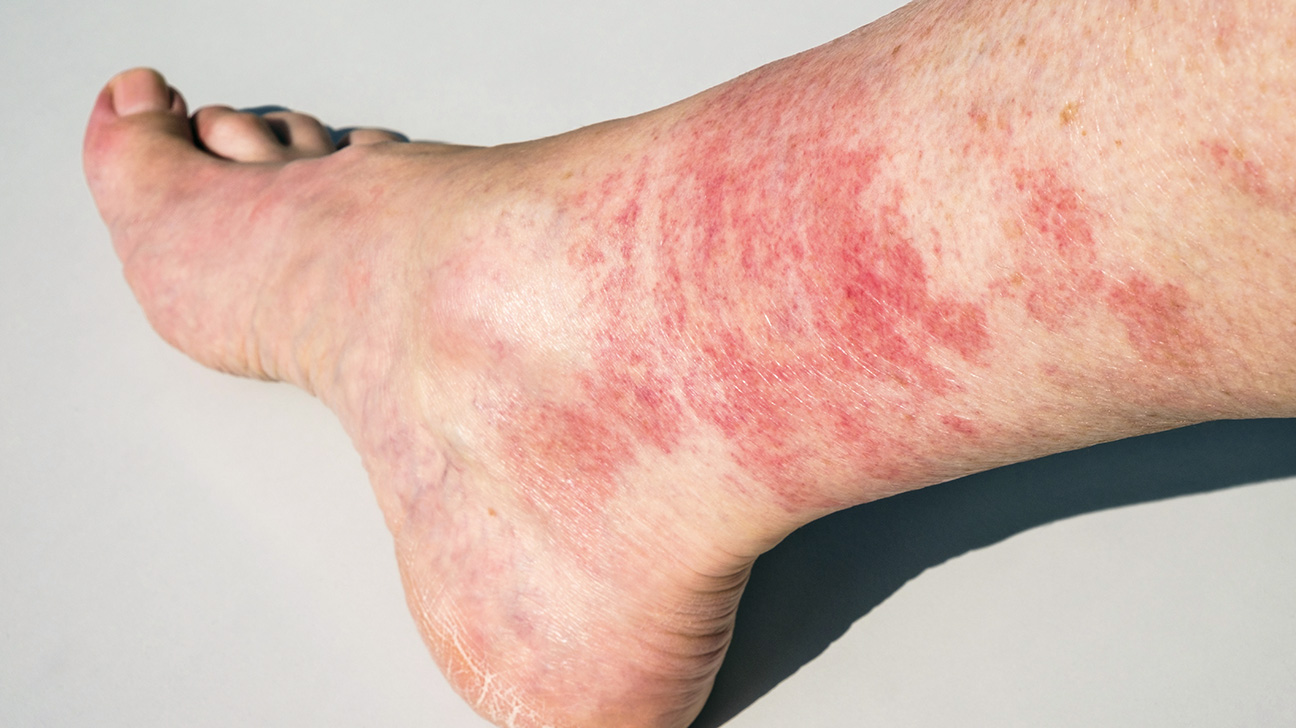Diabetes sores on legs are a common diabetic skin condition. They usually occur on the feet, but can also occur on the shins or calves. It is important to know what diabetic sores are and how to treat them to avoid any complications that may arise from diabetic foot ulcers. This article will give you all of this information as well as ways to prevent diabetes sores from occurring in the first place.
Contents
What are Diabetic Sores
Diabetes sores are open wounds that diabetic people get on their legs. They occur when the diabetic person does not have enough blood flow to heal a wound site, which can happen because of nerve damage in diabetics or because they do not check themselves often for cuts and scrapes. They are one of the most common diabetic complications.
Diabetic sores need to be treated right away because they can lead to infections, which can cause gangrene and ultimately amputation if not caught early enough.
One should clean diabetic sores with soap and water as soon as you notice them on your diabetic leg.
Diabetic sores should be treated with antibiotic ointment, bandaging, and elevated to prevent infection. Diabetic sores that are not properly cared for can lead to the loss of a limb or even death in severe cases if they get an infection. They are one of the most common diabetic complications because diabetics do not take care of diabetic sores in their legs.
Diabetic sores on legs are one of the most common diabetic complications because diabetics do not take care of diabetic sores in their legs.
The appearance of Diabetic Sores on the Leg

Diabetic sores on leg can be as big as 6 inches in diameter, but they’re typically smaller. They’re often in comparison to burn blisters that don’t hurt. Diabetic sores on leg are rarely insight as a single lesion. Rather, they tend to be bilateral or occur in groups. The surrounding skin isn’t usually red nor is it swollen around diabetic sores. Diabetic sores on leg are filled with a transparent, sterile liquid and are commonly itchy.
Causes of Diabetic Sores on Leg
Diabetic sores on leg happen as a diabetic person does not check themselves often for cuts and scrapes, or diabetes-related nerve damage. Diabetics may also develop diabetic foot ulcers because of high blood sugar levels, which can destroy blood vessels in their legs. Diabetics have a higher risk of infection too because they have less sensation in diabetic sores so they may not notice or feel a diabetic sore on their leg.
If your blood sugar levels are not well and in control, you’re more likely to get diabetic sores on leg. People who have diabetic neuropathy, a nerve disease that reduces pain sensitivity, are more prone to develop diabetic sores on leg. Peripheral artery disease is also in consideration as a contributing factor.
When to See Your Doctor
If you get diabetic sores on leg, contact your doctor immediately. The majority of diabetic sores on leg will heal on their own, but there is a chance of secondary infection. If you experience any of the following symptoms, call your doctor right away:
- redness around the blister
- swelling
- the warmth radiating from the lesion
- pain
- fever that accompanies the above symptoms
Diagnosis of Diabetic Sores on Leg
If you have diabetic sores on leg, the doctor will take a sample of your clear fluid and look at it under a microscope to make sure that you do have diabetic sores on leg. If the doctor thinks you have diabetic sores, they will test your blood sugar level. Diabetic
Treatment for Diabetic Blisters

If you have diabetes, there’s a good chance that infection and ulceration will occur. You could wish to have a dermatologist examine you for more serious skin diseases in light of the risk of infection and ulceration. Without treatment, diabetic sores generally heal in two to five weeks, according to Clinical Diabetes.
This will help maintain the skin as a covering for the injury since treating sores yourself could lead to shredded skin that does not act as an effective barrier.
Bandaging can be in use to protect sores from additional harm and treat them with antibiotic ointment or cream. If the itching is severe, your doctor may prescribe a steroidal lotion.
The most essential step you can take to avoid diabetic sores or speed their healing if you already have them is to maintain your blood sugar levels in control.
How to Prevent Diabetic Sores On Leg
It’s critical to keep an eye on your skin if you have diabetes. If you have neuropathy, sores may go unnoticed. When you acquire blisters or get infections in the wounds, there are things you can do to avoid them:
- Each day, carefully inspect your feet.
- Wearing shoes and socks will help you avoid hurting your feet.
- Wear shoes that aren’t too constricting.
- Take it easy, when trying new shoes as it may cause diabetic sores.
- Wear gloves when pruning or using gardening equipment that might result in blisters.
- Some individuals are sensitive to ultraviolet light, which causes blisters. Apply sunscreen and avoid going outside as much as possible.
Conclusion
It is important to treat diabetic sores as soon as they appear. If left untreated, the open wound can quickly become infected and lead to further medical complications. This blog post has provided you with an overview of different treatment options for this condition so that you are prepared if it occurs in your life or with someone close to you. We hope there will be no need for any emergency room visits. Call us today if we can help!
Do you want to get rid of diabetes? Join our online diabetes consultation program and reverse your Diabetes naturally through lifestyle changes such as a Personalized Diet plan, Exercise, dieticians, and health coaches.


